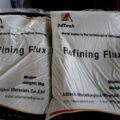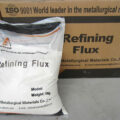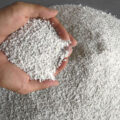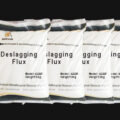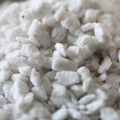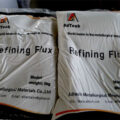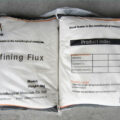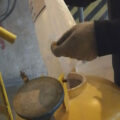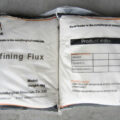Foundry flux is widely used in the production of primary aluminum and secondary aluminum to improve the quality of the melt and the recovery rate of metal aluminum.
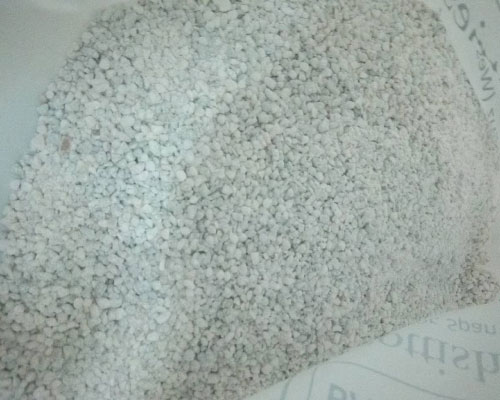
In the process of aluminum and aluminum alloy smelting, hydrogen and oxide inclusions are the main substances that pollute the aluminum melt. Aluminum is very easy to generate alumina with oxygen. At the same time, it is also very easy to absorb gas (H) whose content accounts for 70-90% of the total gas in the aluminum melt. The main defect holes and slag inclusions in cast aluminum alloys are due to residual Caused by solid particles such as gases and oxides in the alloy. Therefore, in order to obtain high-quality melt, it is not only necessary to select the correct and reasonable melting process, but also the refining and purification treatment of the melt is also very important.
There are many methods for refining and purifying aluminum and aluminum alloy melts, mainly including floating method, flux refining method, melt filtration method, vacuum method, and combined method.
Foundry Flux Function
- Change the wettability of aluminum melt to oxide (alumina), so that aluminum melt is easy to separate from oxides. As a result, most of the oxides enter the flux and the oxide content in the melt is reduced.
- Foundry Flux can change the state of the oxide film on the surface of the melt. This is because it can break the solid and dense oxide film on the surface of the melt into fine particles, which is beneficial for the hydrogen in the melt to escape from the particle gaps of the oxide film and enter the atmosphere.
- The presence of the flux layer can isolate the contact between water vapor in the atmosphere and the aluminum melt, making it difficult for hydrogen to enter the aluminum melt, and at the same time prevent the melt from oxidizing and burning.
- Foundry Flux can absorb the oxides in the aluminum melt, so that the melt can be purified. In short, the role of flux refining to remove inclusions is mainly achieved by adsorption, dissolution and chemical interaction with oxide films and non-metallic inclusions in the melt.
There are many types of fluxes used in aluminum alloy smelting, which can be divided into two categories: covering agent (flux to prevent melt oxidation and burning and gas absorption) and refining agent (flux for degassing and removing inclusions). Different aluminum alloys are used The covering agent and refining agent are different.
The flux refining method has a good effect on the removal of non-metallic inclusions, but the degree of purification of the removal of non-metallic inclusions in the melt is not only related to the physical and chemical properties of the flux, but also depends to a large extent on the refining process conditions , Such as the amount of flux, the contact time between the flux and the melt, contact area, stirring condition, temperature, etc.


